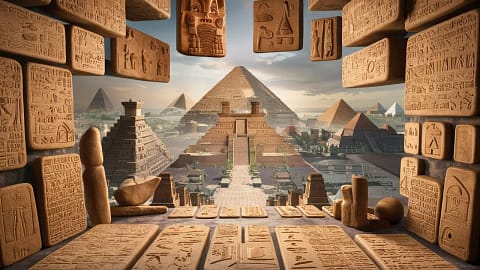The Legacy of Gudea: The Legendary Cylinders of the King of Lagash
The Gudea Cylinders are one of the most important artifacts of the ancient Sumerian civilization and contain detailed information about the reign of Gudea, king of Lagash. Here is extensive information about the Gudea Cylinders:
Discovery and History: The Gudea Cylinders date to 2125 BC and tell a Sumerian legend called The Building of the Temple of Ninurta1. The cylinders were created by Gudea, king of Lagash, and discovered in 1877 by Ernest de Sarzec during excavations at Telloh (ancient Girsu), Iraq1.
Storage Status: After their discovery, the cylinders were shipped to Paris, France in 1878 and are now on display at the Louvre Museum. The artifacts are housed in the Near Eastern artifacts section of the Louvre Museum.
Content and Expression: The Gudea Cylinders are made of terracotta and contain the longest known text written in Sumerian. The cylinders are in the form of two cylinders describing the construction of the Temple of Ninurta (Ningirsu) and are written in cuneiform. The texts on the cylinders cover topics such as the procurement of materials for the construction of the temple, prayers and ceremonies dedicated to the gods.
Authors: Although the authorship of the cylinders is uncertain, it is generally thought to have been written by royal scribes or priests. Cuneiform means that the cylinders are read in a horizontal position, and this is a typical form used between the Akkadian Empire and the Ur III dynasty.

Scientific Articles and Research: Scholarly work on the Gudea Cylinders falls under the categories of Sumerian mythology and creation myths. These works are considered one of the longest texts written in the Sumerian language and provide in-depth information about the religious and mythological beliefs of the Sumerian civilization.

This information shows how valuable the Gudea Cylinders are for understanding Sumerian civilization and reconstructing its history. The cylinders provide invaluable insights into the religious, social and architectural structure of ancient Mesopotamia and reflect the richness of Sumerian culture.
Sources:
- https://tr.wikipedia.org/wiki/Gudea_silindirleri[↩]




